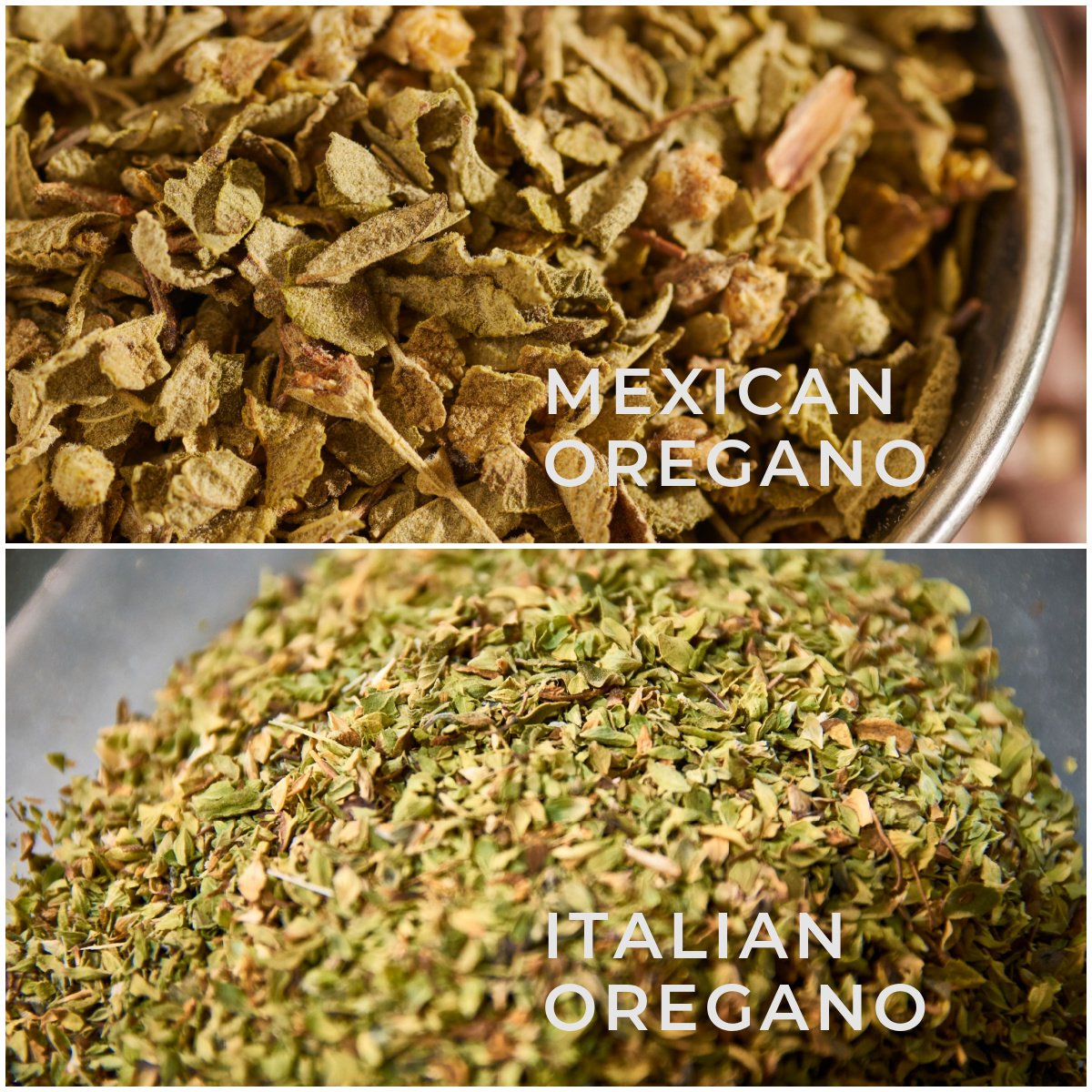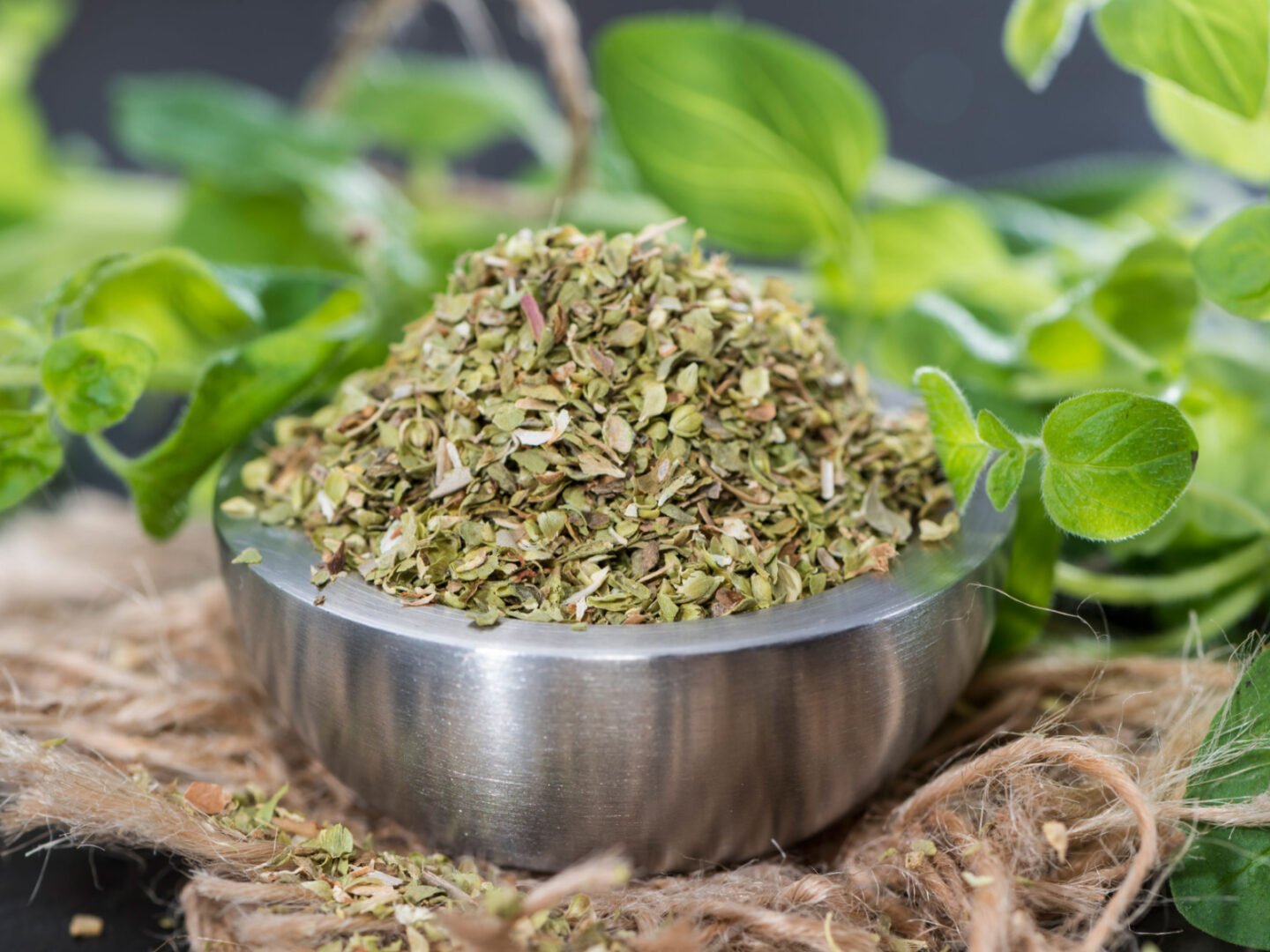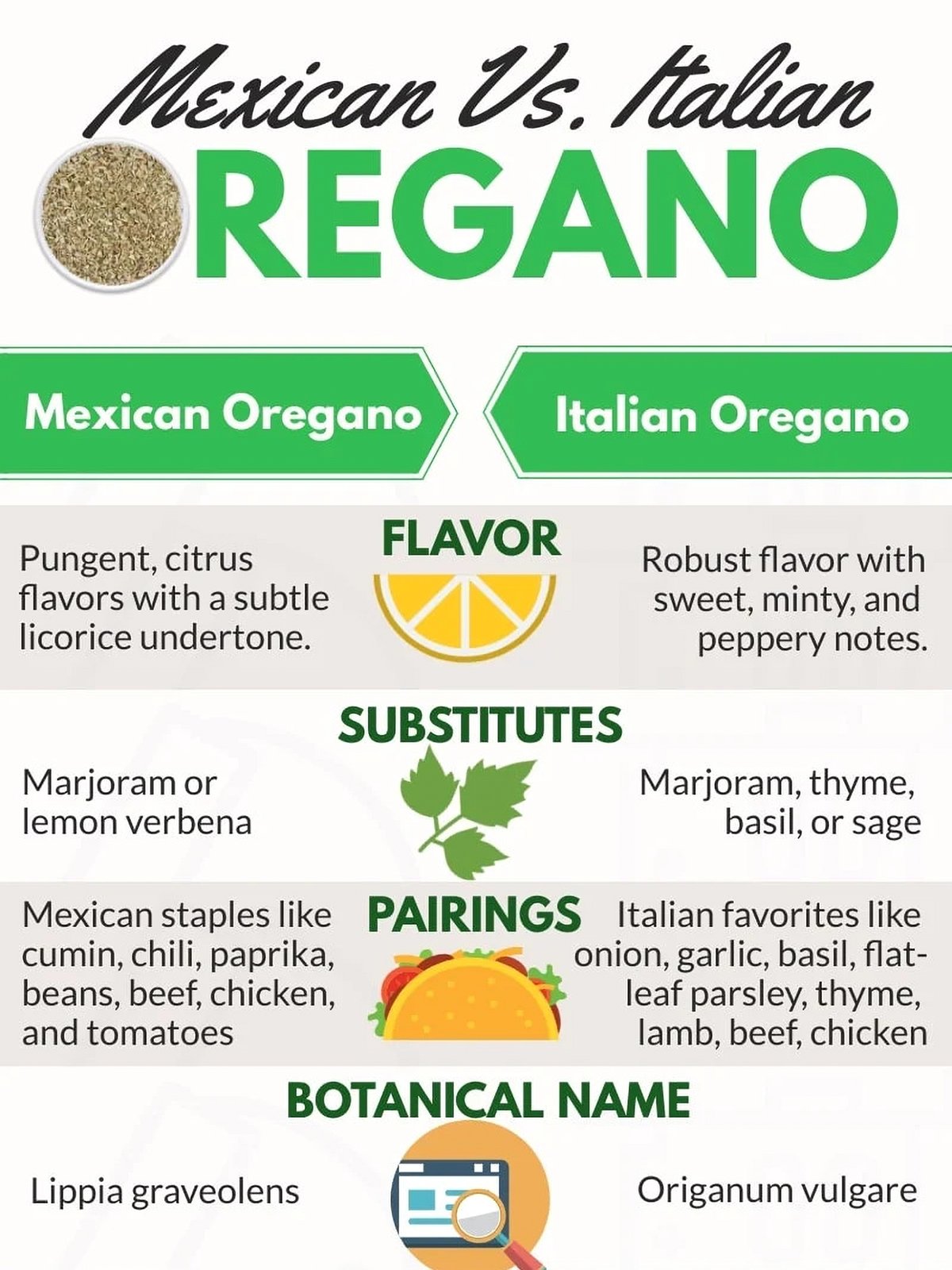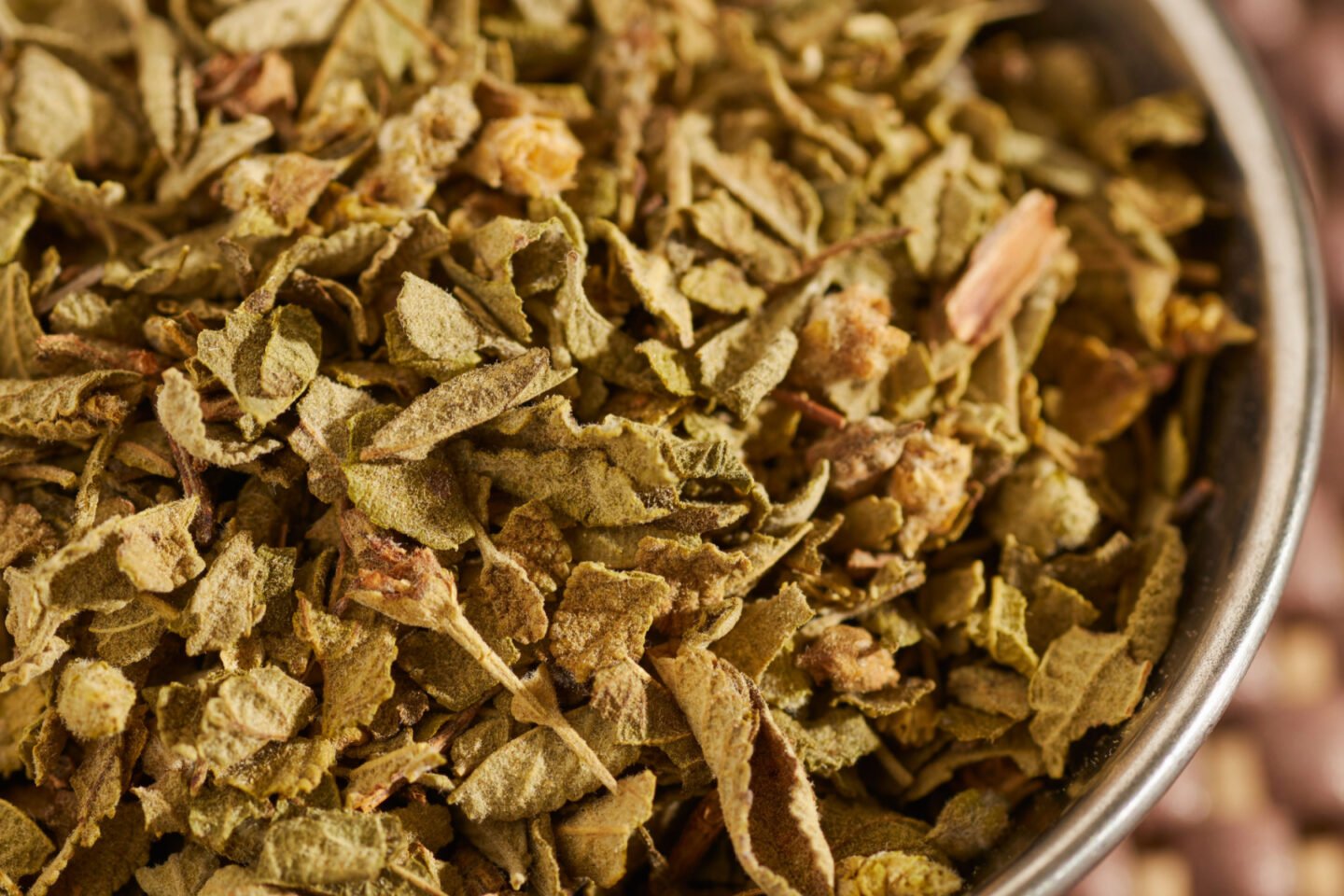The main difference between Mexican and Italian oregano is how they taste. Mexican oregano has licorice and citrusy undertones, while Italian oregano has sweet and minty undertones. Due to this difference, these spices have different uses; Mexican oregano pairs well with cumin, chili, and paprika, while Italian oregano works well with basil, parsley, and thyme.

Although these two spices have the same name, they have distinct differences that make them unique. If you’re unsure which one to pick, read on as I discuss each type, its flavor, pairings, and substitutes.
Table of Contents
What's the difference between Mexican and Italian oregano?
Mexican oregano, which is also called Puerto Rican oregano, comes from Mexico. It has a strong citrus flavor with a hint of licorice. It is excellent for sprinkling into salsa, Latin American dishes, black beans, pozole, or spicy Tex-Mex food like chili.
Italian oregano is the regular variety that is more commonly used in U.S. households. It has a strong flavor with sweet, minty, bitter, and peppery notes. It is also called "wild marjoram." Of all the Mediterranean oregano varieties, Italian is the mildest and is delicious added to pasta sauce, pizzas, or used as part of a meat rub seasoning.
Both herbs can be used fresh or dried, but you'll find the Mexican variety is stronger and can easily overpower dishes. We suggest using this option when you're cooking with other ingredients that won't be overpowered; for everything else, Italian oregano is our seasoning of choice.
Substitutes

- Mexican oregano can be replaced by marjoram or lemon verbena if you’re in a pinch.
- Use marjoram, thyme, basil, or sage as your best alternatives for regular oregano.
Although Mexican and Italian oregano can be used interchangeably, it isn’t a great idea for some recipes. For example, a sweet tomato sauce benefits from a sprinkle of regular oregano, but if you add the Mexican version, it will dominate the dish.
Keep in mind that Mexican oregano has an additional lemony flavor note and is more pungent, so we suggest using less of this ingredient if you have to replace the Italian variety.

Pairings
Mexican oregano pairs well with ingredients traditionally found in a Mexican pantry. Consider using spices like cumin, chili, and paprika, or combine it with food like beans, beef, chicken, avocado, and tomatoes.
Pair regular oregano with other Italian favorites like onion, garlic, basil, flat-leaf parsley, or thyme. Use it with lamb, beef, chicken, or combine it with olive oil as a base for your next Italian vinaigrette.
Which is better?
Choosing a winner out of Italian and Mexican oregano is tough because they both have their uses in the kitchen. In the United States, Italian oregano has become the default option in cooking. It is hard to know whether this is because its flavor is a better match for the American palate or because it was introduced to American households, decades before Mexican cuisine went mainstream.

Mexican oregano’s intense earthy, peppery flavor may be a little too much for some people, especially kids. Italian oregano, or any oregano from the Mediterranean, is likely to be the most popular choice because of its subtle taste.
Rather than trying to decide a winner, it's better to keep each option at home and alternate depending on the cuisine. Use regular Italian oregano in Italian recipes and reserve the Mexican variety for burritos, tacos, beans, heavy meat dishes, and other similar styles of recipes.
Related Questions
While Mexican and Italian oregano leaves can be used fresh or dry in cooking, we suggest using the dried spice when cooking Mexican. Its flavor develops and intensifies, but best of all, it is easier using a shaker bottle without the need for preparation.
If you're looking to buy regular Mediterranean or Italian oregano, then you’ll easily find them in the spice aisle of the grocery store. Locating Mexican oregano is a bigger challenge and you’ll probably need to visit a specialty grocer or Latin market. Alternatively, it's easy to find online.
Fast Facts About Oregano
- Mexican oregano is native to Mexico, Southwest United States, and Central America. Its botanical name is Lippia graveolens and it is part of the Verbenaceae family, which lemon verbena is also a part of.
- Regular oregano originally came from Greece and is now grown in Italy. It has developed a unique flavor when compared to the oregano from other parts of the Mediterranean. Its scientific name is Origanum vulgare and it is a part of the mint family (Lamiaceae).
- Mediterranean oregano is native to the Mediterranean and it is commonly found in France, Italy, Turkey, Morocco, and Israel. However, Greek oregano is considered by many to be the best for flavor.
- Mexican oregano is harvested from a flowering plant that is highly drought tolerant. Although it is a popular ingredient in Mexican recipes, it is also used for making herbal tea.
Summary Comparison - Mexican & Italian Oregano
| Mexican Oregano | Italian Oregano | |
|---|---|---|
| Flavor | Pungent, citrus flavors with a subtle licorice undertone | Robust flavor with sweet, minty, bitter, and peppery notes |
| Substitutes | Marjoram or lemon verbena | Marjoram, thyme, basil, or sage |
| Pairings | Mexican staples like cumin, chili, paprika, beans, beef, chicken, avocado, and tomatoes | Italian favorites like onion, garlic, basil, flat-leaf parsley, thyme, lamb, beef, chicken |
| Dried or fresh? | Can be eaten fresh by dried is better | Can be used fresh or dried |
| Ease of buying | Mostly found in Latin specialty stores | Found in the spice aisle of most grocery stores |
| Botanical name | Lippia graveolens | Origanum vulgare |
Summing Up
Mexican and Italian oregano are two quite different ingredients when used in cooking. As a general rule, it's usually best to reserve each one for their own cuisine. Each plant comes from completely different families which explains why their flavor is different. The Mexican variety is pungent and citrusy with a subtle anise undertone; Italian Oregano has a slightly sweeter, more subtle flavor and it's likely to be the spice that you're currently using in cooking.
It is conceivable that the two spices can be used to replace each other in cooking. After all, one spice is unlikely to ruin a dish, especially if you don’t use a heavy hand. However, you're better to replace Mexican oregano with marjoram while Italian oregano could be replaced with marjoram, basil, or thyme.
What herbs and spices do you consider essential in the kitchen? Please let us know in the comments below.

Leave a Reply